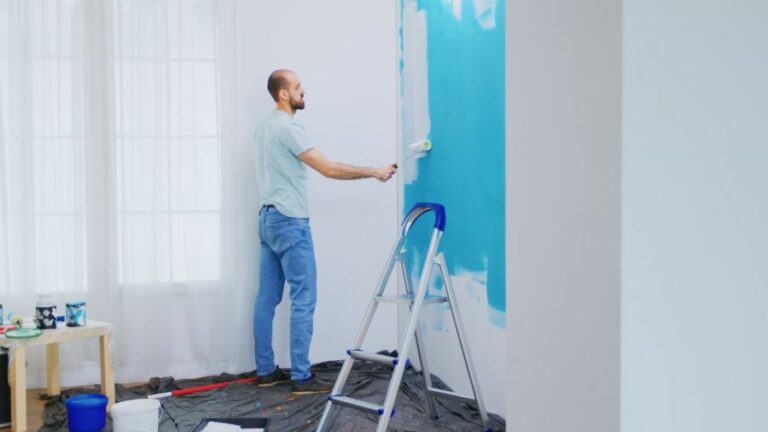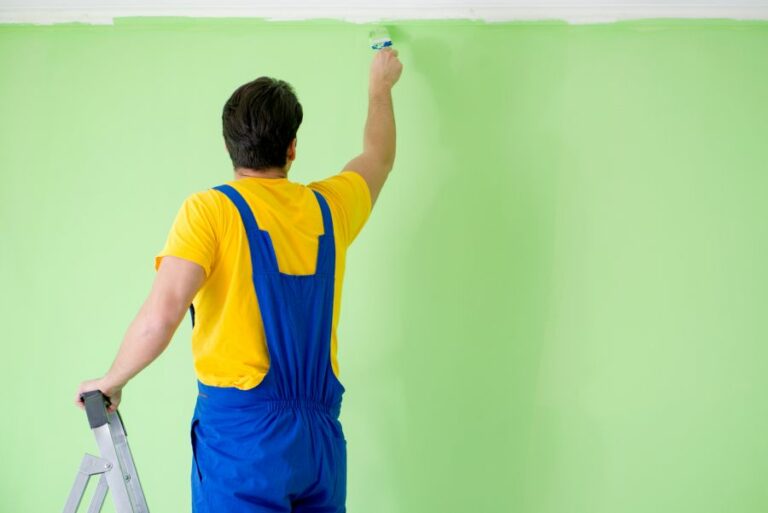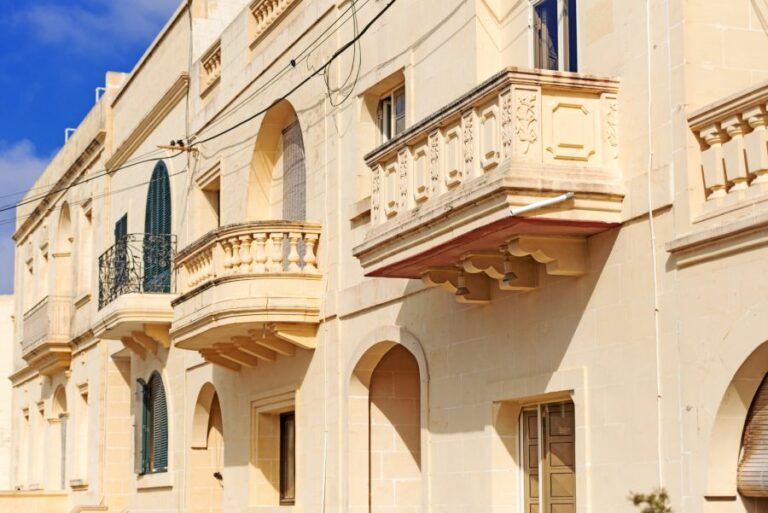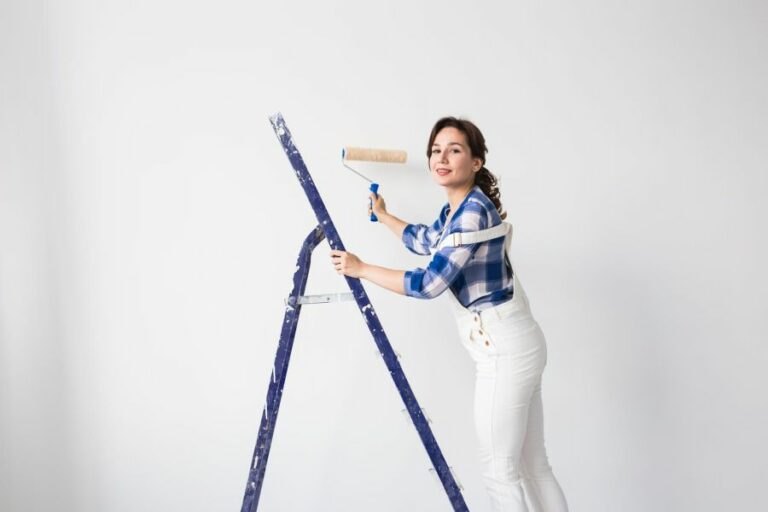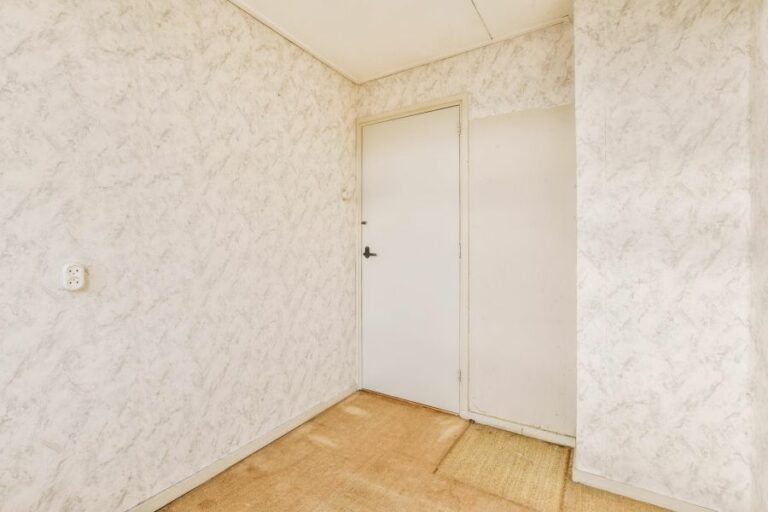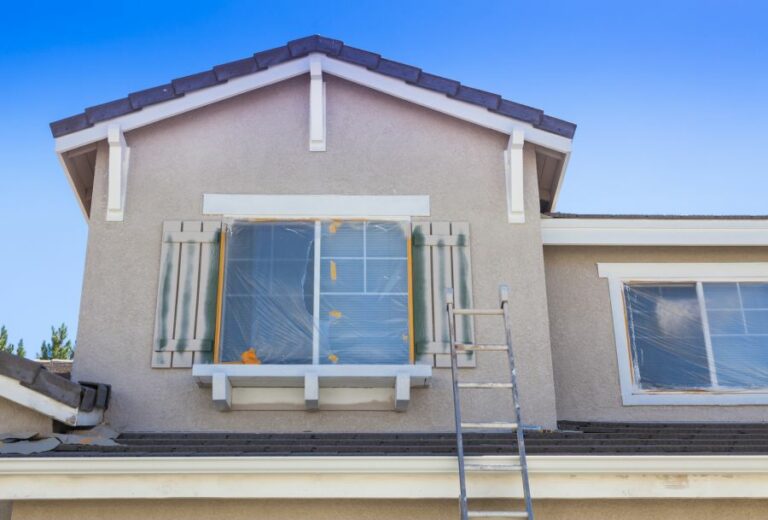Surface Restoration For Heritage Buildings. What Pros Say
When it comes to preserving the history and cultural significance of heritage buildings, surface restoration plays a critical role. Implementing the right techniques and choosing appropriate materials for the job not only ensures the structure retains its original beauty but also guarantees its longevity. Over the years, we have honed our expertise in surface restoration, which allows us to confidently provide solutions for any heritage building project.
Surface restoration for heritage buildings:
Surface restoration is a process that involves repairing or replacing the exterior elements of heritage buildings to preserve their historical and architectural significance. This includes cleaning, repairing, and conserving architectural elements. The process ensures the building’s original features are maintained while also maintaining its structural integrity, preventing further deterioration and potential damage. It contributes to cultural heritage preservation, urban regeneration, and increased property values.

Are you fascinated by preserving the aesthetic and historical value of heritage buildings? Uncover the intricacies of surface restoration, the techniques involved, and the importance of safeguarding architectural legacies.
Read on to delve deeper into the world of conservation and be amazed at the possibilities!
Contents
- 1 Heritage Building Surface Rehabilitation
- 2 Understanding Historic Building Restoration
- 3 Techniques for Old Building Preservation
- 4 Comparing Historic Preservation and Restoration
- 5 Defining Heritage Property Renovation
Heritage Building Surface Rehabilitation
• Introduction to Surface Restoration
Surface restoration is the process of repairing or replacing the exterior elements of heritage buildings to maintain their historical and architectural significance. This process ensures the preservation of the building’s original features while maintaining its structural integrity.
Surface restoration can involve various techniques, including cleaning, repairing, and conserving architectural elements.
• The Importance of Restoring Heritage Buildings
Heritage buildings are essential to our cultural history and play a significant role in defining the character of our cities and towns. They act as a link to our past, connecting us to the stories and lives of those who came before.
Preserving these buildings not only enriches our cultural heritage but also contributes to urban regeneration, increased tourism, and improved property values.
Surface restoration is a critical component in the overall process of maintaining and preserving these historic structures. It helps prevent further deterioration and potential damage, ensuring the building’s elements remain in good condition for future generations.
Furthermore, conservation efforts can help create a sustainable environment by using traditional construction methods and locally-sourced materials, contributing to reducing the overall carbon footprint of the building.
• Methods Used in Surface Restoration
There are various methods and techniques involved in surface restoration for heritage buildings, depending on the type and condition of the materials being restored. Some common methods include:
– Cleaning
Cleaning involves the removal of dirt, soot, and other pollutants that have accumulated on the building’s surface. It is crucial to choose the correct cleaning technique, as inappropriate cleaning methods can cause more harm than good. Some common cleaning methods include:
- Water Washing: This method uses water, pressure, and mild detergents to clean surfaces gently. Low-pressure water washing is recommended to prevent damage to the building’s materials (source).
- Chemical Cleaning: This technique involves using chemical agents to dissolve tough stains and deposits. However, it requires careful consideration, as some chemicals may cause damage to the building materials.
- Poulticing: This method is ideal for delicate surfaces or when chemicals are not appropriate. It involves applying a poultice that absorbs and draws out dirt and stains from the surface.
– Repair
Repair involves fixing damaged or worn surface elements, such as masonry, stucco, and woodwork. Some common repair techniques include:
- Repointing Masonry: Repointing involves removing and replacing the mortar between bricks or stones, which may have eroded or weathered over time. Using the correct mortar mix ensures a proper bond and reduces the chance of future water infiltration.
- Patch Repair: Small-scale repairs to damaged areas include patching concrete or stucco, using a matching material to the original, or filling small cracks in woodwork.
– Conservation
Conservation focuses on preserving the original materials and features of the building. It can involve a combination of cleaning, repair, and prevention techniques. Some common approaches include:
- Protective Coatings: Applying weather-resistant coatings to surfaces can help prevent damage from environmental factors such as sunlight, moisture, and pollutants.
- Structural Stabilization: Ensuring that the building’s overall structure is sound can help prevent issues with exterior elements due to shifting, settling, or other structural problems.
• Recommendations from Experience
When embarking on a surface restoration project for a heritage building, the following recommendations should be considered:
- Consult an Expert: Engage a conservation professional with experience in restoring heritage buildings to provide guidance on appropriate methods, materials, and techniques.
- Conduct a Thorough Assessment: Before beginning any work, assess the building’s condition, including the extent of any damage, the causes of deterioration, and the best methods for remediation.
- Use Appropriate Materials: It is essential to use materials that match the original building as closely as possible to maintain historical accuracy and prevent further damage.
- Implement a Maintenance Plan: Regular maintenance is key to preserving a heritage building. Establish a proactive maintenance plan to address any developing issues before they become more significant problems.
- Documentation: Keep accurate records of all restoration work, including photographs, material choices, and maintenance schedules, to provide valuable documentation for future conservation efforts.
• Conclusion
Surface restoration plays a critical role in preserving the beauty and historical significance of heritage buildings. By employing appropriate cleaning, repair, and conservation techniques, we can ensure these structures are protected and enjoyed by future generations.
Moreover, engaging experienced professionals and implementing a proper maintenance plan will help guarantee the success and longevity of restoration projects.
Understanding Historic Building Restoration
• Understanding Restoration
Restoration of historic buildings is an essential process to preserve and revitalize unique architectural and historical artifacts. It is a specialized and systematic effort involving a deep understanding of the building’s history, materials, and construction techniques.
The primary goal is to bring back the original appearance of the building, maintaining its historical integrity and authenticity.
• The Importance of Restoration
– Cultural Significance
Restoring historic buildings helps to preserve the cultural heritage of a country or a community. It enables future generations to learn from the past, maintain traditions, and appreciate the unique architectural and historical value of such structures.
– Environmental Sustainability
Restoration contributes to environmental sustainability by retaining the embodied energy in the existing building materials, reducing waste generated during demolition, and conserving resources that would otherwise be consumed in new construction.
– Economic Benefits
Historic buildings, once restored, can be repurposed or serve as tourist attractions, boosting local economies. They can also contribute to higher property values, job creation in construction and related sectors, and increased revenue from property taxes.
• Key Principles of Restoration
– Respect for the Original Building
Always remember to respect the original design, materials, and intentions of the building when undertaking a restoration project. Make sure that any alterations or repairs do not compromise the historical value and integrity of the structure.
– Minimal Intervention
Adopt a policy of minimal intervention to safeguard the building’s authenticity. In other words, it is better to leave a defect or damage unaltered if repairing it would harm the original fabric of the building.
– Reversibility
When undertaking any restoration work, consider the reversibility of your actions. The interventions should be carried out in a way that they can be reversed easily without leaving any lifelong impact on the building’s original fabric.
– Compatibility
Use materials and techniques that are compatible with the original ones used in the building to ensure long-term sustainability and integration of the restoration work.
– Maintenance
Routine maintenance is crucial for the long-term preservation of historic buildings. Regular inspections, cleaning, and repairs will help to prevent decay and damage to the structure.
• Restoration Process
– Research and Documentation
The first step in the restoration of historic buildings involves conducting thorough research to understand their history, architectural style, and construction techniques. This phase also includes detailed documentation of existing conditions using photographs, drawings, and written descriptions.
– Assessment and Planning
Once documentation is available, a comprehensive assessment should be undertaken to determine the extent of damage and required interventions. Based on this assessment, a restoration plan should be developed to outline the scope of work, timeline, and budget.
– Restoration Work
The actual restoration work typically starts with cleaning and stabilization of the building. Then, any necessary repairs or replacements are made, ensuring adherence to the principles of restoration discussed above.
Extra care should be taken in selecting materials and techniques that closely match the original.
– Monitoring and Ongoing Maintenance
After the restoration is complete, proper monitoring and ongoing maintenance are crucial to ensure the continued preservation of the historic building.
• Hiring Restoration Professionals
Given the technical complexities and the importance of historical accuracy, it is highly recommended that you seek the expertise of professionals trained in the field of historic preservation. This includes architects, engineers, craftsmen, and other specialists who have experience working on historic buildings.
In conclusion, the restoration of historic buildings is a vital process that helps us preserve and cherish our past. By adhering to the principles of restoration and engaging skilled professionals, we can ensure that these architectural gems continue to inspire future generations.
Techniques for Old Building Preservation
Preserving old buildings is an essential aspect of maintaining the cultural and historical heritage of a region. Old buildings serve as a testament to their era, showcasing unique architectural styles and reflecting the stories of those who have lived and worked within their walls. In this article, we explore some ways to preserve old buildings and ensure their longevity for future generations to appreciate.
• Regular Maintenance
One of the most effective ways to preserve an old building is by performing regular maintenance. This entails:
- Cleaning: Keeping the building clean can help prevent issues such as insect infestations and mold growth. Regularly sweeping, mopping, and dusting can prevent dirt and debris from accumulating and causing damage.
- Roof maintenance: Periodically checking the roof for leaks, broken tiles, or other damage is crucial, as problems in the roof can lead to damage to the interior of the building. (National Park Service – Technical Preservation Services)
- Plumbing and electrical: Regularly inspecting plumbing and electrical systems can help identify potential problems before they become significant, expensive repair issues.
- Repairs: Addressing minor damage promptly can help prevent it from turning into larger, more costly repairs. For example, fixing cracked or decaying mortar can help preserve a building’s brickwork.
• Restoration Works
Restoring deteriorated elements of an old building to their original state is another way to preserve its architectural integrity. This can include:
- Masonry repairs: Professional restorations of brick, stone, and mortar can help maintain the structural integrity of a building and prevent water intrusion or damage due to age and wear. (National Center for Preservation Technology and Training)
- Wood replacement: Replacement or repair of damaged wood in a building, such as rotted window frames or floorboards, can prevent structural problems.
- Painting: Applying fresh coats of paint to walls, ceilings, and other surfaces can help protect them from environmental damage and maintain the building’s original aesthetic.
- Historic window restoration: Refurbishing old windows, including repairing damaged glass and resealing the frames, can preserve their historic appearance and improve energy efficiency.
• Adaptive Reuse
Finding new purposes for old buildings can help ensure their continued use and preservation. Adaptive reuse involves reconfiguring the structure or layout to accommodate new functions while maintaining as much of the original building’s character as possible. Examples of adaptive reuse include converting:
- Old warehouses into residential lofts
- Former churches into community centers or art galleries
- Historic schools into boutique hotels
Adaptive reuse can not only breathe new life into old buildings but also provide substantial economic and environmental benefits by reducing the need for new construction and preserving existing materials. (National Trust for Historic Preservation – Adaptive Reuse)
• Legal Protection
Securing legal protection can help safeguard old buildings from demolition or unsuitable alterations. This might include:
- Historic designation: Obtaining official historic status for a building can provide it with legal protection under local, regional, or national preservation laws.
- Preservation easements: Property owners can voluntarily grant easements to a preservation organization, ensuring that the building’s historic features will be protected in perpetuity, regardless of future ownership changes.
• Public Awareness and Support
Increasing public awareness about the value of an old building can help cultivate community support for its preservation. Such public support can encourage government bodies to prioritize conservation efforts and funding. Initiatives for raising awareness might include:
- Publicity campaigns: Launch media campaigns, including newspaper articles, social media posts, and presentations at public events, to highlight the historical and cultural significance of old buildings.
- Educational programs: Organizing workshops, seminars, and guided tours that provide information about a building’s history, architecture, and the importance of preservation.
- Collaboration with local organizations: Partnering with organizations such as historical societies, preservation groups, and schools to promote awareness, support, and fundraising.
In conclusion, the preservation of old buildings is incredibly important for maintaining cultural and historical heritage.
By implementing regular maintenance, carrying out restoration works, considering adaptive reuse, securing legal protection, and raising public awareness, we can ensure the continued existence and appreciation of these architectural treasures for generations to come.
Method | Description |
|---|---|
Regular maintenance | Performing routine maintenance tasks such as painting, repair of gutter systems, and roofing can prolong the life of the structure and maintain its original character. |
Repointing | Replacing deteriorated mortar in the joints of brick or stone buildings can help protect the structure from water damage and extend its lifespan. |
Structural reinforcement | Adding additional support or strengthening existing components can help old buildings withstand the stresses of time, natural disasters, and human activity. |
Weatherproofing | Sealing windows and doors, installing insulation, and improving drainage can help protect old buildings from the damaging effects of rain, snow, and wind. |
Adaptive reuse | Converting an older building for a new purpose (such as a warehouse becoming a residential loft) can give it a new lease on life while preserving its architectural features. |
Historic tax credits or grants | Securing financial assistance from government programs can help fund the restoration and preservation of historic buildings. |
Local preservation ordinances | Promoting the enactment of local legislation that protects older buildings against demolition or inappropriate alterations can aid in their preservation. |
Public education and awareness | Raising awareness about the architectural, historical, and cultural value of old buildings can generate public support and funding for preservation projects. |
Comparing Historic Preservation and Restoration
Understanding the distinction between historic preservation and restoration is crucial for anyone involved in the field of architectural conservation, city planners, or simply those with a keen interest in the upkeep of historic structures.
• Defining Historic Preservation
Historic preservation is the process of safeguarding and maintaining the historical, cultural, and architectural integrity of a building or structure.
This approach aims to protect the building’s original design, materials, and overall ambiance while allowing it to continue fulfilling its original function or adapting it to a new one.
Historic preservation can take various forms, including routine maintenance, stabilization, and rehabilitation. It ensures that the historical significance of the structure is preserved for future generations.
The National Trust for Historic Preservation is an organization dedicated to the cause and provides valuable resources on the topic.
– The Importance of Historic Preservation
Historic preservation holds immense value for communities and society at large. This practice not only conserves the built environment but also serves as a means of cultural preservation.
The maintenance of historic structures can preserve the sense of identity and continuity in a community, offering insights into the area’s past and fostering a sense of pride among community members.
Moreover, historic preservation provides economic benefits, as tourism is often drawn to areas with well-preserved historic sites. Additionally, rehabilitating older buildings for new purposes can revitalize neighborhoods and support local economies.
• Defining Restoration
Restoration, on the other hand, is a specific form of historic preservation that focuses on returning a building or structure to a specific time in its history.
Unlike preservation, which seeks to maintain a building’s overall character, restoration involves more significant interventions that may require the removal or replacement of non-original elements or features.
The process of restoration typically involves extensive research into the building’s history and construction, and architects rely on historical documentation and physical evidence to recreate the building’s appearance during a particular time.
– The Importance of Restoration
Restoration plays a vital role in providing an accurate representation of a building’s original appearance, which can contribute to our understanding of historical events, architectural styles, and cultural practices. Such projects are particularly important for buildings with significant historical, political, or artistic value.
While restoration can be meticulous and often consumes more resources compared to maintenance-focused strategies, the results can be invaluable for providing tangible connections to the past.
• Key Differences Between Historic Preservation and Restoration
Though both historic preservation and restoration share the common goal of conserving and protecting the built environment, several distinctions should be noted:
- Purpose: Preservation aims to maintain a building’s original character, while restoration seeks to recreate its appearance at a specific point in time.
- Interventions: Preservation involves minimal interventions, focusing on maintenance and repair, while restoration may require significant architectural and material changes to accurately represent a building’s historical appearance.
- Specialization: Restoration typically requires specialized knowledge of historical periods, materials, and techniques, whereas preservation generally focuses on maintaining existing elements.
- Documentation: Restoration projects rely heavily on historical documentation and evidence, which may not be as integral to preservation efforts.
- Scope: Preservation encompasses a wide array of strategies that can be applied to various structures, whereas restoration is a specialized approach mainly applied to buildings with significant historical, political, or artistic value.
• Recommendations for Successful Conservation
Based on my experience in the field of architectural conservation, I recommend the following steps for successful projects:
- Research: Thoroughly investigate the history of the building or structure, including its design, construction, and any alterations made over time.
- Seek Expertise: Collaborate with experts in architecture, conservation, and restoration to ensure that each aspect of the project is approached responsibly and with accuracy.
- Evaluate the Context: Consider the building’s surroundings and its place in the community when planning interventions. This includes understanding its historical, cultural, and social significance.
- Emphasize Maintenance: Prioritizing consistent maintenance can slow the process of deterioration and reduce the need for more costly and invasive interventions.
- Document: Thorough documentation of the building’s original state, any changes made during the preservation or restoration process, and post-project conditions are critical for future reference and possible intervention.
In conclusion, both historic preservation and restoration are vital in safeguarding our architectural heritage. Understanding the nuances between these two approaches allows for better decision-making and more responsible conservation efforts.
By appreciating the history and the context in which a building exists, communities can ensure the preservation of their physical and cultural legacies for generations to come.
Aspect | Historic Preservation | Restoration |
|---|---|---|
Goal | Maintain and preserve the historic character of a building or site while allowing for modern use and adaptations. | Return a building or site to its appearance or condition at a specific period in time. |
Approach | May involve a combination of repair, maintenance, and replacement work without altering the overall historic appearance. | Often involves extensive research, removal of non-historic elements, and reconstruction of missing historic elements. |
Focus | Preserving the overall historical integrity and character of a building or site. | Accuracy and authenticity of materials and design elements from a specific historical period. |
Defining Heritage Property Renovation
Heritage renovation, also known as historic preservation or conservation, is the process of maintaining, restoring, and preserving historic properties, architectural structures, and cultural landscapes.
These buildings and sites hold significant cultural, historical, and architectural value, representing the rich heritage of a region, nation, or community.
• The Importance of Heritage Renovation
Heritage renovation is vital for a variety of reasons, including:
– Preserving Cultural Identity
By preserving historic buildings and sites, we are able to maintain a connection with our past and the stories of the individuals who inhabited or used these spaces. This helps to foster a sense of cultural identity and pride within communities.
– Environmental Sustainability
Renovating and repurposing existing historic structures reduces the need for new construction. This, in turn, conserves energy and materials, helps promote sustainable urban development, and minimizes the environmental impact of demolition and new building projects.
– Economic Benefits
Heritage renovation projects create employment opportunities in fields like architecture, construction, and tourism. Moreover, refurbished historic sites can attract visitors, stimulating growth in local businesses and contributing to the overall economy of a region.
– Educational Opportunities
Historic sites and buildings serve as tangible evidence of the past, offering unique educational opportunities for both students and the public to learn about history, art, and architecture.
• The Process of Heritage Renovation
Heritage renovation involves several steps, including:
– Assessment and Documentation
Before undertaking any renovation work, it is essential first to assess the historic property thoroughly. This includes documenting its current state through photographs, drawings, or 3D scans, as well as researching its history, architectural style, and any past alterations or repairs.
– Securing Permissions and Compliance
Many historic properties are legally protected by strict preservation guidelines set by local, regional, or national authorities. Any proposed changes to the site often require prior approval, necessitating a thorough understanding of these regulations and ensuring that all required permits are secured.
– Developing a Renovation Plan
Heritage renovation projects should be guided by a detailed plan, accounting for both the preservation of significant architectural and historical features, as well as necessary improvements to the building’s structure, safety, and functionality.
This plan should be developed in consultation with experts, such as architects, preservationists, and engineers, who specialize in historic properties.
– Restoring and Preserving Materials
One of the goals of heritage renovation is to preserve as much of the original building fabric as possible. This often involves carefully removing, cleaning, and repairing historical materials such as stone, wood, metal, and glass.
In cases where materials are missing or irreparably damaged, compatible replacements should be sourced and installed.
– Employing Traditional Crafts and Techniques
Whenever feasible, traditional crafts and techniques should be employed during a heritage renovation project to maintain the integrity and authenticity of the historic property.
This includes using historically appropriate building methods and materials, as well as employing skilled artisans who are knowledgeable in the traditional trades.
– Ensuring Sustainability and Longevity
Heritage renovation projects should also strive to create a balance between preserving the historic qualities of a building and making it functional, safe, and energy-efficient for modern-day use.
This might involve retrofitting the building with updated insulation, heating, and cooling systems, as well as incorporating renewable energy sources or other sustainable technologies.
• In Conclusion
Heritage renovation is a crucial aspect of preserving our past and ensuring that future generations can continue to learn from and appreciate the cultural, historical, and architectural treasures within our communities.
By implementing careful planning, employing skilled professionals, and adhering to preservation guidelines, we can breathe new life into these historic properties while maintaining their essential character and significance.
For more information on heritage renovation and historic preservation, I recommend visiting the National Trust for Historic Preservation and the International Council on Monuments and Sites (ICOMOS).
These organizations provide valuable resources, guidance, and advocacy for the preservation and conservation of our shared cultural heritage.

